Art gallery and archive by Lacaton & Vassal mirrors an old shipbuilding workshop
Paris architects Lacaton & Vassal have designed a translucent structure to house an international art collection that is a mirror image of the adjoining former shipbuilding workshop (+ slideshow).
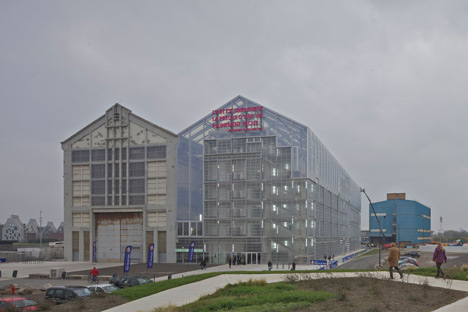
Lacaton & Vassal won a competition organised by FRAC (France's regional contemporary art fund) to transform the derelict workshop in the port area of Dunkirk into a new home for the archives and exhibition spaces of the Nord-Pas de Calais region.
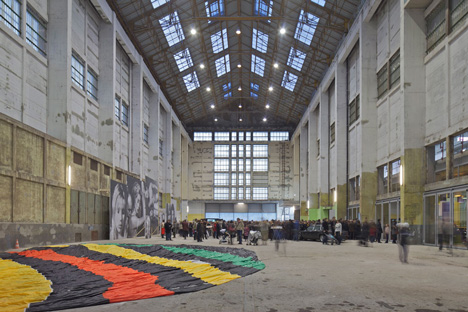
Instead of overhauling the existing workshop, which was built in 1949 and is known as halle AP2, the architects chose to conduct minor renovations and leave it empty so it can be used to host events, exhibitions and house large-scale artworks. In addition, they proposed constructing an extension of identical dimensions alongside it.
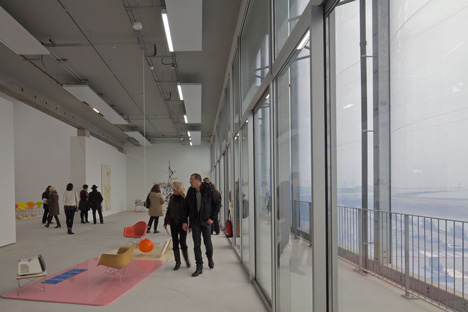
"The halle AP2 is a singular and symbolic object. Its internal volume is immense, bright, impressive: its potential for uses is exceptional," explained the architects. "The new building juxtaposes delicately without competing nor fading. The duplication is the attentive response to the identity of the halle."
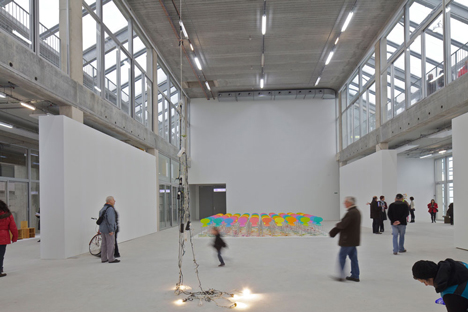
The new structure extends from the side of the renovated warehouse and provides an additional 9,357 square metres of floor space alongside the 1,953 square metres of usable space inside halle AP2.
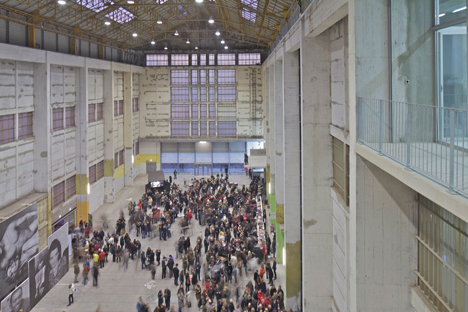
A translucent skin of corrugated polycarbonate covers most of the new structure's exterior and surrounds a solid concrete core in which a collection of over 1,500 artworks are stored in protective conditions.
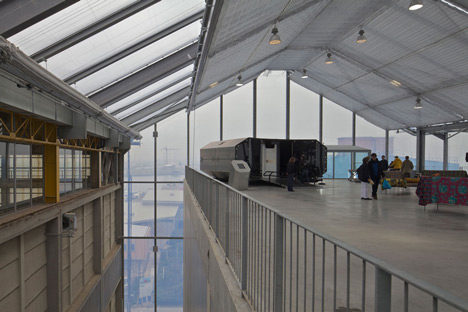
"Under a light and bioclimatic envelope, a prefabricated and efficient structure determines free, flexible and evolutionary platforms, with few constraints, fit to the needs of the program," said the architects. "The transparency of the skin allows to see the background vision of the opaque volume of the artworks reserves."
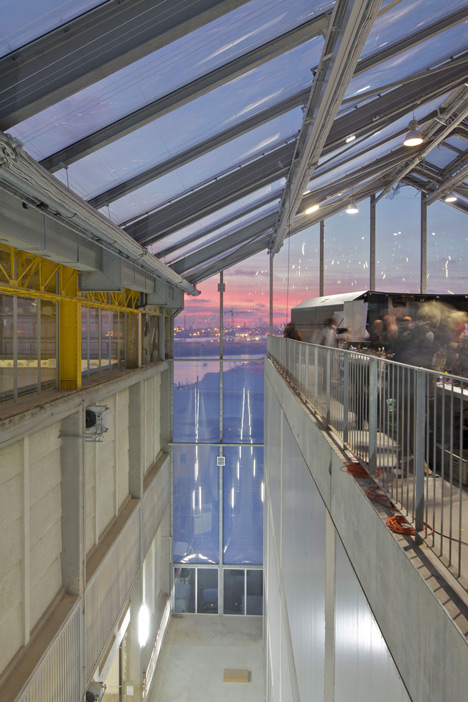
Artworks are delivered to a loading bay and transit areas on the ground floor and then transferred using a lift at the centre of the building to archives on three further storeys. The ground floor also houses a reception and cafeteria that looks into the halle AP2, and the first of several exhibition spaces spread throughout the building.
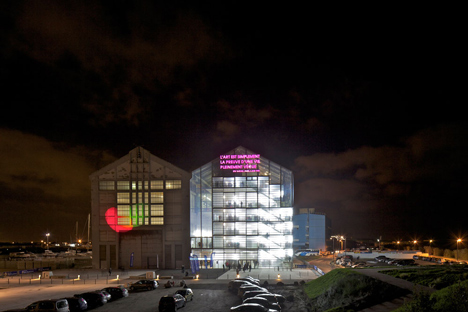
Above the cafeteria, an internal street fills the void between the old and new structures, and there are plans to connect this space to an elevated walkway that would traverse the canal that currently separates the port from the adjacent beach. Exhibition halls, education facilities, administration and event spaces are accessed using lifts at the front of the building.
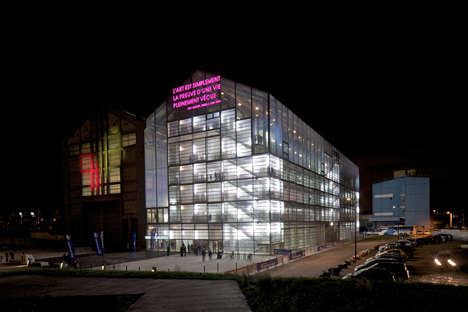
On top of the concrete core is an open event space that sits beneath the gabled steel framework, which is fitted with clear EFTE pillows to allow a view of the port and the nearby town.
Photography is by Philippe Ruault.
The following information is from the architects:
FRAC (Regional Contemporary Artwork Collection) of the North region
The FRAC houses regionally assembled public collections of contemporary art.
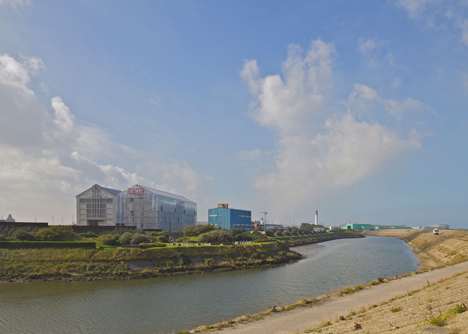
These collections are conserved, archived and presented to the public through on site exhibitions and by loans to both galleries and museums.
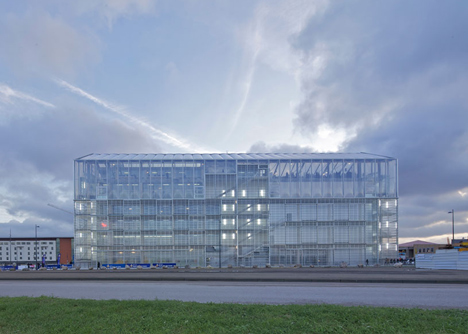
The North region FRAC is located on the site of Dunkerque port in an old boat warehouse called Halle AP2. The halle AP2 is a singular and symbolic object.
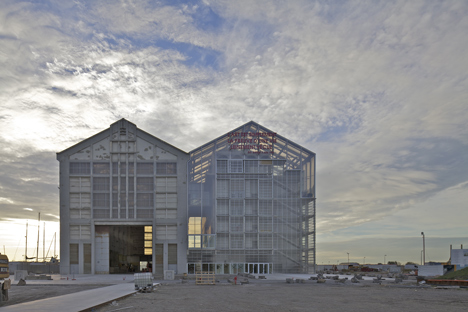
Its internal volume is immense, bright, impressive. Its potential for uses is exceptional.
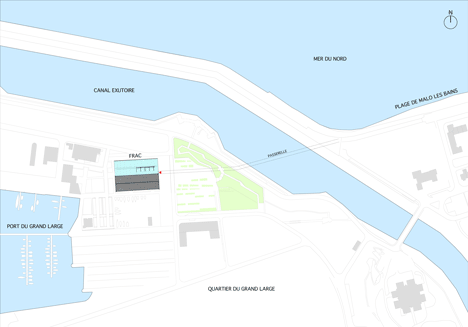
To implant the FRAC, as a catalyst for the new area, and also to keep the halle in its entirety becomes the basic idea of our project.
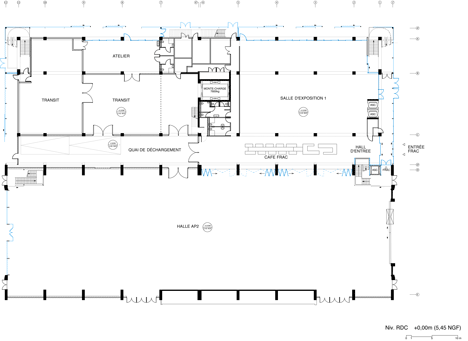
To achieve this concept, the project creates a double of the halle, of the same dimension, attached to the existing building, on the side which faces the sea, and which contains the program of the FRAC.
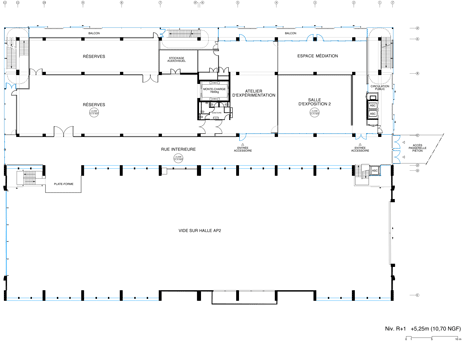
The new building juxtaposes delicately without competing nor fading. The duplication is the attentavie response to the identity of the halle.
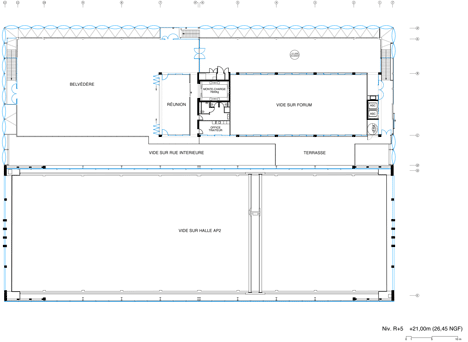
Under a light and bioclimatic envelope, a prefabricated and efficient structure determines free, flexible and evolutionary platforms, with few constraints, fit to the needs of the program.
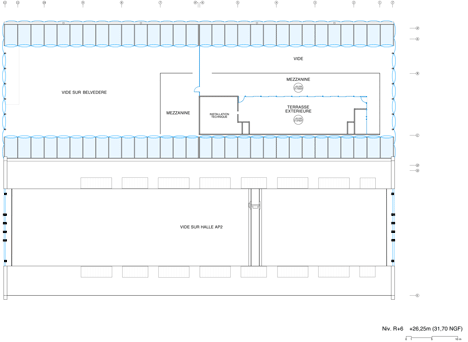
The transparency of the skin allows to see the background vision of the opaque volume of the artworks reserves.
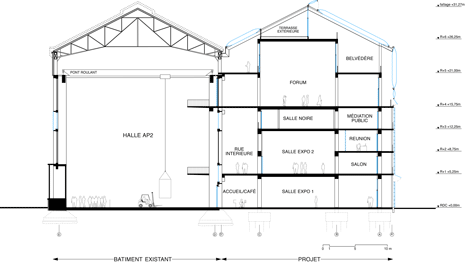
The public footbridge (previously planned along the facade) which crosses the building becomes a covered street entering the halle and the internal facade of the FRAC.
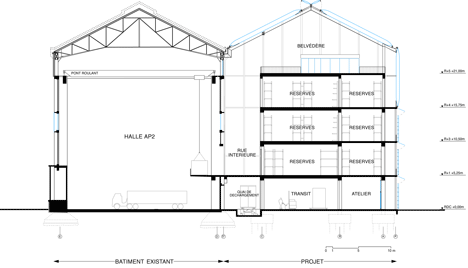
The halle AP2 will remain a completely available space, which can work either with the FRAC, in extension of its activities, (exceptional temporary exhibitions, creation of large scale works, particular handlings) or independently to welcome public events (concert, fairs, shows, circus, sport) and which enriches the possibilities of the area.
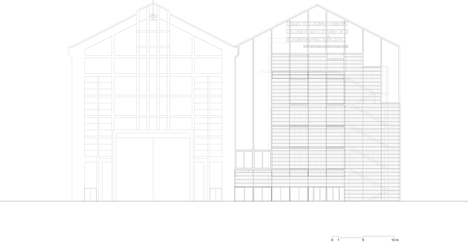
The functioning of each of the buildings is separated, or combined. The architecture of the halle and its current quality make sufficient minimal, targeted and limited interventions.
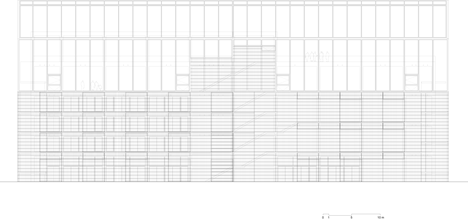
Thanks to the optimisation of the project, the budget allows the realisation of the FRAC and the setting up of conditions and equipment for public use of the halle AP2.
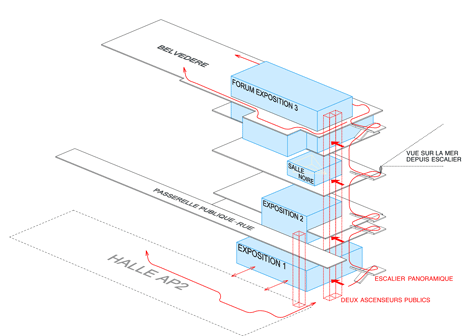
The project so creates an ambitious public resource, of flexible capacity, which allows work at several scales from everyday exhibitions to large-scale artistic events, of regional but also european and international resonance, which consolidates the redevelopment of the port of Dunkerque.
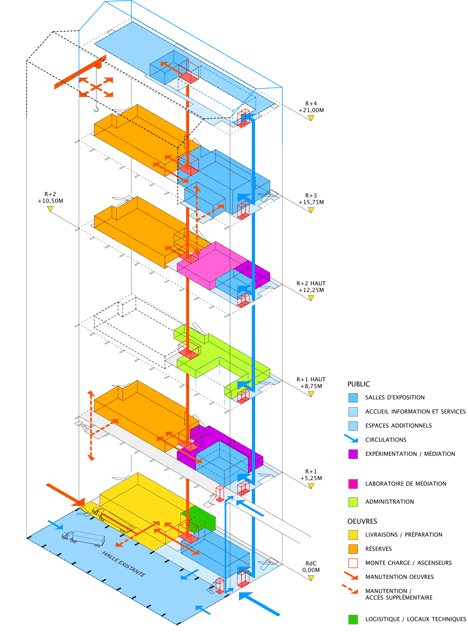
Site : Dunkerque, France
Date : competition 2009, design 2010,completiion scheduled in 2012 - 2013
Client : Communauté Urbaine de Dunkerque
Architects : Anne Lacaton & Jean Philippe Vassal with Florian de Pous, chief project, Camille Gravellier, Yuko Ohashi, Juan Azcona and for the competition, Sandrine Puech, David Pradel, Simon Durand
Engineers : Secotrap, structure, mechanical systems, CESMA, metal structure, Vincent Pourtau
Program : artwork reserves, exhibition rooms, education
Area : 11 129 m2 net :
- 9 157 m2 new building
- 1 972 m2 existing halle
Cost :12 M Euros net (2011)